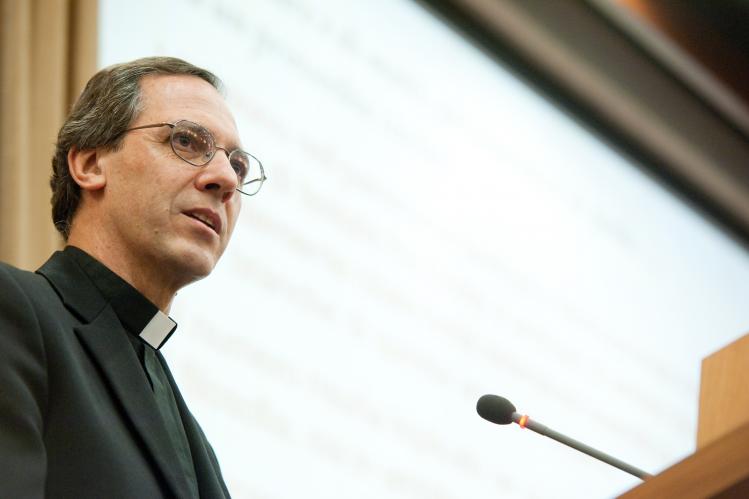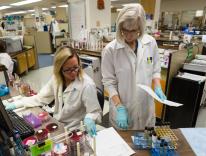
I first met Fr. Giuseppe Tanzella-Nitti back in 2011 at St. Edmunds’s College, Cambridge, during a conference to celebrate the eightieth anniversary of Fr. George Lemaitre’s “Letter to Nature” outlining what later became celebrated as the Big Bang theory. At the time, Tanzella-Nitti was working on a monumental four-volume series for students and teachers on how to discuss Christian faith in light of modern science.
His new book, Scientific Perspectives in Fundamental Theology: Understanding Christian Faith in the Age of Scientific Reason, just out from Claremont Press, is the first presentation in English of the key issues discussed in the first two volumes of his Italian series. He hopes it will be a useful resource at both the undergraduate and graduate levels of study in theology, coming as it does from a committed Christian with a solid background as a research scientist.
Tanzella-Nitti is currently a professor of Fundamental Theology at the Pontifical University of Santa Croce, Rome, and a priest in the Prelature of Opus Dei. But he began his academic career in science as a researcher in radio astronomy at the University of Bologna, and then as an astronomer at the Observatory in Turin. He is now a member of the Vatican Observatory.
“I got my degree in astronomy at the University of Bologna in 1977, discussing a thesis on the optical variability of quasars,” he told me when we connected via email. “At that time, more than forty years ago, we knew very little about the central energy machine which let quasars be the most powerful optical sources in the universe. The study of their optical variability was a good way to discriminate among different models of energy production: clusters of supernovae, spinors, black holes, etc.”
Since that time, he said, we’ve learned that quasars are the active nuclei at the center of very distant galaxies, and there are black holes pouring out energy at the center of these nuclei.
“We also know that their very large optical variability is due to jets of plasma which are produced in the accretion disks around black holes and points right along the line of sight of the observer.”
I wondered whether his interest in theology ran parallel to his research, or whether it came much earlier. In fact, he told me, it was the reverse.
“Up to the age of sixteen,” he said, “I could consider myself a non-believer, perhaps an agnostic, but in the less educated sense of the term. Then I came in contact with Christian believers who impressed me with the sincere testimony of their lives.” From that point, he said, he began to study theology privately. Opus Dei became an important part of his faith journey, and after about twenty years, he realized a vocation to the priesthood within the prelature.
He also realized a devotion to teaching at Santa Croce. “Initially I was in charge of teaching dogmatic theology,” he said, “but soon afterwards I was asked to move towards fundamental theology.” This change gave him the opportunity to approach the studies of science and theology from his own perspective, at a time when the topic of religion and science was mainly the focus of books and conferences held in the English-speaking world.
“I had never lost my interest in science and I continued to read scientific journals of astrophysics,” he said. But until he began teaching theology at the university, he had thought that his interest in science would not fit well with his teaching duties as a theologian. Instead, he realized that studies on science and theology could now find a home within fundamental theology, since, in his view, the discipline deals in a relevant way with the relationship between faith and reason. Former colleagues working in scientific research became curious about his turn to theology and the priesthood, and they started asking him to present his thoughts on the topic of faith and science at conferences. “So, with some surprise and some excitement, I returned to various physics departments and astronomical observatories, now as a priest and as a theologian, to speak on interdisciplinary topics.”
One of the fruits of these conferences was the birth of a website, the Interdisciplinary Encyclopedia of Religion and Science: Inters.org. It remains one of the leading—if not the leading—online resource for students and teachers exploring the relationship between science and faith in depth. “The website is increasingly known in the United States and United Kingdom,” Tanzella-Nitti said. “We have about 25,000 pages read each month from all over the world, including India and China. The website is principally addressed to those who teach in schools and universities, promote pastoral initiatives for the Christian evangelization of culture, or those who are interested in the interdisciplinary aspects of scientific research.”
Tanzella-Nitti considers his new book the first attempt to develop a fundamental theology that considers the methods of scientists as well as philosophers when it comes to exploring basic doctrines and traditions. In his own words: “Theology is explained taking into account the questions which science usually addresses to Revelation: Where and when did God speak to men? Is this revelation believable? What is the relation between the history of the cosmos and the history of salvation? How could contemporary man be son of Homo sapiens and son of God as well? Has Christology any cosmic dimension? What if life were discovered elsewhere in the universe?” These are paramount questions, he added, and “we need to address them, even if some of them would have…at this point, only a partial and incomplete reply.”
He hopes that his book draws enough interest to justify the publicatioin of a second volume, where he could present topics he addressed in the third and fourth Italian volumes, which are currently used in courses at the master’s-degree level.
In Tanzella-Nitti’s view, the aim is not to offer an essay on the compatibility between faith and science or on specific topics, so much as to see how the natural sciences like physics, biology and cosmology can be used thoroughly in theology as a factor of dogmatic development. “In a nutshell,” he explained, “theology should look at the natural sciences not only as a source of trouble, but also as a source for positive, new insights.”
In Tanzella-Nitti’s view, Catholic scientists need a pastoral resource addressed to their minds, with their scientific outlook. They should be encouraged to sincerely seek greater insights into the aspects of their faith that have a major relationship with their scientific research, thus achieving a higher synthesis between their Christian faith and their scientific knowledge. The Church, for its part, has to realize that the first and most important evangelizers in the worlds of science and technology are not pastors or theologians, but the lay faithful who are professionally active in scientific research and in the institutions where this culture is forged.
“I hope that in the future, the institutional studies training pastors for the priesthood and beyond will pay greater attention to scientific results and to scientific thought in general. This is especially necessary in those geographic areas particularly involved in the task of a new evangelization, where scientific culture has become part of the way of thinking and judging of a very broad range of people.”
Finally, Tanzella-Nitti hopes that the Church will foster and encourage theologians’ interest in science and the culture of science. He points to the frequent references to science in many of the documents from the Second Vatican Council.
“In dialoguing with science, theologians are not only invited to study the compatibility between scientific results and biblical Revelation,” he said, “but also, again, to make use of proven scientific knowledge as an aid to better understand the Word of God. In this way the proclamation of the Word will become more profound and meditated and, therefore, more effective and helpful.”
